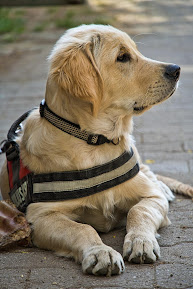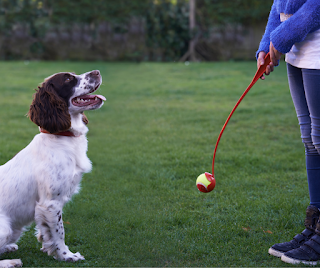Harnesses - Friend or Foe?
Harnesses - Friend or Foe?
There has been an ongoing debate in the dog-loving community for years. Are collars or harnesses better for our dogs? The truth is, both options have benefits and drawbacks, and this will affect each dog differently as an individual.
What works fantastically for one dog, maybe the worst possible option for another. And, that's okay.
There are no hard, set rules when choosing what is best for your dog. And, this is perhaps why the collar vs harness debate can never truly be remedied once and for all.
An increasing number of dog guardians are opting for harnesses for their beloved canine companions. It's hardly surprising when you look at the reasons why a harness may be best for your dog. Some benefits include:
- More ability for your dog to move freely
- Increased control over your dog when they're on their lead
- Reduced pressure on your dog's neck and throat if they pull
- Harder to escape from or wriggle out of if they fit well
- Multiple places to attach your lead means extra security
- Can be used safely in conjunction with a long line during recall training
- Can help to reduce pulling alongside positive training
- Tend to be a safer and more comfortable option, particularly for brachycephalic breeds, strong pullers, breeds prone to IVDD or other spinal conditions, or those with collapsed tracheas or other breathing issues
However, it's not as straightforward as simply grabbing a harness for your dog and living happily ever after! You need to consider some things first to make sure your dog's harness is the best option for them. These considerations include:
Making Sure The Harness Allows Full Range Of Movement
This is perhaps the most crucial part of choosing a harness for your dog. It's absolutely essential that your chosen harness does not restrict your dog's movement whatsoever. Your dog should be able to move freely when walking, running and moving around. This is where the shape of the harness comes into importance. There's a very popular brand and style of harness which actually restricts your dog from moving normally. These harnesses have a strap that lies horizontally across your dog's chest. So, while they're undoubtedly fashionable, they could, in fact, be the worst harness choice for your dog. Straps lying across your dog's chest will naturally reduce how far they can extend their legs forwards, changing their natural gait and reducing their full range of movement. An example of this restrictive type of harness is shown below.
The Shape Of The Harness
As we have just touched on, the shape and style of your chosen harness is also significant. The most suitable options are known as H or Y-shaped harnesses. This refers to the shape of the harness when viewed from the top. Both options allow your dog a full range of movement, which is crucial. An example of a H-shaped harness is shown below.
The Material Of The Harness
Once you have decided on the best harness shape, you need to consider the material it's made from. Many materials are available, so it's down to you to find what is most comfortable for your dog. Material options include; nylon webbing, fleece, cotton fabric, or leather.
Smooth or short-haired dogs may benefit from a softer material like fleece to prevent chafing or rubbing. Although, this can make longer-haired dogs too hot and sweaty if they wear it for a long time. Fleece can also stretch out of shape if your dog's a persistent puller, so bear that in mind!
Nylon webbing is a popular option as it's strong and durable. Many manufacturers line the webbing with fleece or cotton to make it more comfortable for your dog.
Leather is perhaps the strongest and hardest-wearing harness option. It can be easily wiped clean but shouldn't be put in the washing machine! However, it's also the one most likely to rub your dog, especially when it's new and has not been softened up yet. An example of a leather harness is shown below.
The Fit Of The Harness
Once the style and material have been decided, you need to look at the fit! It's best to choose a fully adjustable harness to make sure it fits your dog as well as possible. There are even companies that tailor-make harnesses to your dog's own specific measurements. Some companies have interchangeable sections which can be changed as your dog grows to ensure a good fit.
Harnesses should never be tight enough to cause sores or create friction against your dog's skin. They should also not too be too loose that they can wriggle out of them!
How Your Lead Attaches To The Harness
Harnesses often have different points of contact where your lead can be attached. Many dog guardians prefer harnesses with at least 2 points of attachment as this is more secure and can offer more control over your dog. Some have a ring attachment at the front of the harness and one at the back, if this is the case, it's advisable not to use the front attachment solely as this can cause your dog to move awkwardly.
Although it's clear there are lots of benefits to choosing a harness instead of a collar for your dog, it's vital you choose the right one. If not, any benefits there could have been from using a harness will be much less likely to be effective. So, you must be confident that the harness you choose for your dog is 100% suitable and safe for them to wear. Choosing the wrong style of harness or one that doesn't fit well, can turn them into more of a foe than a friend!
To find out more about how to help your dog be as happy as they can be, why not take a look at my book Canine Contentment - The Essential Guide








Comments
Post a Comment